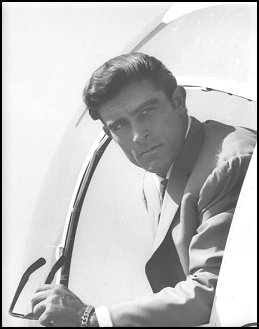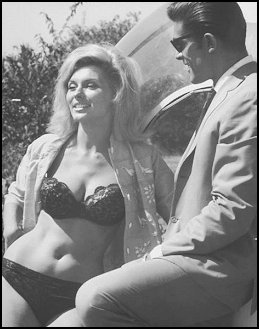





The Animus and the Loincloth: "Tarzan and the Valley of Gold" (AIP; 1966)
CAST: Mike Henry (Tarzan); Nancy Kovack (Sophia Renault); David Opatoshu (Augustus Vinero); Don Megowan (Mr. Train).
Screenplay: Clair Huffaker
Producer: Sy Weintraub
Director: Robert Day
 Continuing with his successful efforts to produce more "adult" Tarzan films, producer Sy Weintraub expanded upon the themes of the very best of the Gordon Scott films, "Tarzan's Greatest Adventure" (1958) in order to create a "new look" Tarzan for the swinging sixties. Deliberately exploiting the secret agent craze of that decade, Weintraub decided to transform the decidedly gentlemanly Apeman into a kind of killer "James-Bond-of-the-jungle", a risky move that, surprisingly, worked extremely well. Tarzan/John Clayton as the "jungle James Bond" developed by ace adventure movie screen writer Clair Huffaker fits quite well with Edgar Rice Burrough's treatment of the character in the later novels; a by now thoroughly "civilized" man who must periodically return to the jungle and re-establish contact with his earlier, more primitive, but "truer" self, in order to successfully perform a dangerous undertaking of some kind. In fact, "Tarzan and the Valley of Gold" (hereafter, "Gold"), is an almost point for point adoption of the seminal James Bond movie "Goldfinger", now translated into the terms of the cinematic conventions of the jungle film. The plot of both films is essentially identical and equally simple.
Continuing with his successful efforts to produce more "adult" Tarzan films, producer Sy Weintraub expanded upon the themes of the very best of the Gordon Scott films, "Tarzan's Greatest Adventure" (1958) in order to create a "new look" Tarzan for the swinging sixties. Deliberately exploiting the secret agent craze of that decade, Weintraub decided to transform the decidedly gentlemanly Apeman into a kind of killer "James-Bond-of-the-jungle", a risky move that, surprisingly, worked extremely well. Tarzan/John Clayton as the "jungle James Bond" developed by ace adventure movie screen writer Clair Huffaker fits quite well with Edgar Rice Burrough's treatment of the character in the later novels; a by now thoroughly "civilized" man who must periodically return to the jungle and re-establish contact with his earlier, more primitive, but "truer" self, in order to successfully perform a dangerous undertaking of some kind. In fact, "Tarzan and the Valley of Gold" (hereafter, "Gold"), is an almost point for point adoption of the seminal James Bond movie "Goldfinger", now translated into the terms of the cinematic conventions of the jungle film. The plot of both films is essentially identical and equally simple. 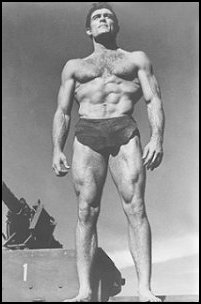 A top-ranked "secret agent" is recruited to prevent a brilliant but sadistic and sexually perverted international criminal from using his private army to loot a vast horde of gold; the hero succeeds at the very last moment, but only after he kills a physically overwhelming opponent in a prolonged and desperate hand-to-hand death struggle. Both films end by strongly suggesting that the hero has "taken" the deceased villain's ex-mistress as his own woman. In what follows, James Bond is Tarzan, the exiled Apeman who must enter a strange and new wilderness in order to re-establish his identity as the true lord of the jungle in the face of the massive criminal threat posed by the villain; Auric Goldfinger is Augustus Vinero, the power obsessed crime-boss who sadistically enjoys killing his enemies (and his used out mistresses) by using high-tech gadgetry; Oddjob is the mountainous bodyguard/hired killer Mr. Train, who possesses mutant strength; and the matchless femme-fatale Pussy Galore, equal part seductress and damsel-in-distress, is Sophia Renault.
A top-ranked "secret agent" is recruited to prevent a brilliant but sadistic and sexually perverted international criminal from using his private army to loot a vast horde of gold; the hero succeeds at the very last moment, but only after he kills a physically overwhelming opponent in a prolonged and desperate hand-to-hand death struggle. Both films end by strongly suggesting that the hero has "taken" the deceased villain's ex-mistress as his own woman. In what follows, James Bond is Tarzan, the exiled Apeman who must enter a strange and new wilderness in order to re-establish his identity as the true lord of the jungle in the face of the massive criminal threat posed by the villain; Auric Goldfinger is Augustus Vinero, the power obsessed crime-boss who sadistically enjoys killing his enemies (and his used out mistresses) by using high-tech gadgetry; Oddjob is the mountainous bodyguard/hired killer Mr. Train, who possesses mutant strength; and the matchless femme-fatale Pussy Galore, equal part seductress and damsel-in-distress, is Sophia Renault.
 "Gold" is my favourite Tarzan film and is, in my opinion, one of the very best of the series, alongside "Tarzan and His Mate" and "Tarzan's Greatest Adventure"; in different ways, all three films are thematically linked and operate to produce similar dramatic effects. What makes these three all highly successful adult versions of Tarzan films is the high level of dramatic suspense they generate through foregrounding the mature themes of Sex and Death as central elements of the plot. Indeed, I would go so far as to argue that "Gold" succeeds so well as jungle film precisely because it is a dramatically compelling re-telling of the archetypal Tarzan story, the same one that Burrough's provided us with in the very first Tarzan novel, "Tarzan of the Apes". The reason why Tarzan continues to exist as a psychologically meaningful figure in popular culture, despite such large number of truly awful films, is because he is a representation in very powerful dramatic terms of the myth of the animus. This is the name that Carl Jung gave to the archetypal male psyche, which begins at a primitive level-"wholly physical man"-and must advance through a progressive series of more highly developed stages in order to achieve full emotional and spiritual development, or "psychic integration". The narrative brilliance of Burrough's creation, expert story-teller that he was, is that the author has taken the universal truth announced by Jung and translated it in terms that are dramatically exciting: the Tarzan mythos is timeless precisely because it is the acting out of the psychic drama of the animus through the adventures of a jungle superhero.
"Gold" is my favourite Tarzan film and is, in my opinion, one of the very best of the series, alongside "Tarzan and His Mate" and "Tarzan's Greatest Adventure"; in different ways, all three films are thematically linked and operate to produce similar dramatic effects. What makes these three all highly successful adult versions of Tarzan films is the high level of dramatic suspense they generate through foregrounding the mature themes of Sex and Death as central elements of the plot. Indeed, I would go so far as to argue that "Gold" succeeds so well as jungle film precisely because it is a dramatically compelling re-telling of the archetypal Tarzan story, the same one that Burrough's provided us with in the very first Tarzan novel, "Tarzan of the Apes". The reason why Tarzan continues to exist as a psychologically meaningful figure in popular culture, despite such large number of truly awful films, is because he is a representation in very powerful dramatic terms of the myth of the animus. This is the name that Carl Jung gave to the archetypal male psyche, which begins at a primitive level-"wholly physical man"-and must advance through a progressive series of more highly developed stages in order to achieve full emotional and spiritual development, or "psychic integration". The narrative brilliance of Burrough's creation, expert story-teller that he was, is that the author has taken the universal truth announced by Jung and translated it in terms that are dramatically exciting: the Tarzan mythos is timeless precisely because it is the acting out of the psychic drama of the animus through the adventures of a jungle superhero.

In this sense, then, there is really only one Tarzan story to tell, that of the very first novel. Expressed in the simplest terms, the archetypal Tarzan story consists of three inter-related parts. (i) Tarzan emerges from within the jungle and goes about establishing his identity as the first-stage animus, performing a series of validating actions that ordinarily involve hunting and/or combat: physical man in the exciting guise of jungle superhero (aka, "The Apeman"; "The Lord of the Jungle"; "The Jungle Lord"; "The Lord of the Apes", and "The White Ape"). (ii) In order to completely assume the mantle of the Lord of the Jungle, Tarzan must fight and kill in barehanded combat an utterly lethal opponent, a deadly "challenger" who is even stronger than he is; in the first novel, this is the killer-ape Terkoz. (iii) As a result of the desperate death-struggle, Tarzan wins (i.e., "mates with") a sexually desirable woman, who is, in fact, the anima, the corresponding female psychic archetype to the male animus. 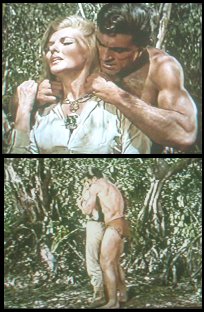 In the Tarzan mythos, the anima receives her first and greatest expression in the form of Jane Porter, whom Tarzan takes immediately after his slaying of Terkoz; the Apeman has risked Death precisely in order to achieve Sex. The great Tarzanologist Philip Jose Farmer has rightfully called Jane "the first seductress" of the mythos: that is, the dramatically necessary materialization of the anima as the only agent who can provide the animus with the libidinal, or "erotic", impulse of sufficient power needed to initiate his long process of psychic integration. As everyone knows, this is the central theme of the Tarzan novels; without Jane, Tarzan would naturally regress to the primitive first stage of the animus. Therefore, the higher stage anima is presented to the first stage animus in terms that he is ably to completely understand: the jungle girl.
In the Tarzan mythos, the anima receives her first and greatest expression in the form of Jane Porter, whom Tarzan takes immediately after his slaying of Terkoz; the Apeman has risked Death precisely in order to achieve Sex. The great Tarzanologist Philip Jose Farmer has rightfully called Jane "the first seductress" of the mythos: that is, the dramatically necessary materialization of the anima as the only agent who can provide the animus with the libidinal, or "erotic", impulse of sufficient power needed to initiate his long process of psychic integration. As everyone knows, this is the central theme of the Tarzan novels; without Jane, Tarzan would naturally regress to the primitive first stage of the animus. Therefore, the higher stage anima is presented to the first stage animus in terms that he is ably to completely understand: the jungle girl.  This is the exact sub-text of the greatest of the Tarzan films, "Tarzan and His Mate"; Jane has "descended" to a more sexually primitive feminine form precisely in order to make contact with the animus and initiate his transformation. The core essence of the Tarzan mythos, then, is romance; Tarzan may very well be the only superhero whose narrative logic demands the presence of an equally archetypal feminine presence. Compared to the "mating" of Tarzan with his Woman, everything else in the mythos-the great apes; the beasts of Tarzan; the jewels of Opar; the Ant-Men-is of secondary importance.
This is the exact sub-text of the greatest of the Tarzan films, "Tarzan and His Mate"; Jane has "descended" to a more sexually primitive feminine form precisely in order to make contact with the animus and initiate his transformation. The core essence of the Tarzan mythos, then, is romance; Tarzan may very well be the only superhero whose narrative logic demands the presence of an equally archetypal feminine presence. Compared to the "mating" of Tarzan with his Woman, everything else in the mythos-the great apes; the beasts of Tarzan; the jewels of Opar; the Ant-Men-is of secondary importance.
The problem here, as we all know, is that Hollywood proved itself utterly incapable of maintaining dramatic allegiance to the archetypal themes of the mythos; a slew of awful films were the result. The end product of "Tarzan and His Mate", the most mature of the Tarzan films, was the puritanical Hay's Code that forced Jane to lose her iconic jungle skin bikini and move with Tarzan into a suburban-style tree-house with their chimpanzee "son". Consequently, when Weintraub sought to revive the moribund film series in the late 1950s, he forced his writers to return to the central elements of the mythos: animus; anima; Sex; Death. The key problem was that Jane was no longer viable as a dramatically serious character, thanks to the deleterious effect of the Hay's Code. The solution was to provide Tarzan with a substitute woman-a "neo-Jane"-who could serve as the centre of new retellings of the mythic romance. Weintraub's first great success was with "Tarzan's Greatest Adventure"; he improved upon this with "Gold", which most perfectly adapts all of the elements of the mythos and successfully translates them into compelling cinematic terms.
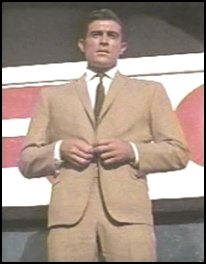
Tarzan/animus
The most insightful comment on the Mike Henry Tarzan films was provided by Gabe Essoe in his book "Tarzan of the Movies".
To give Tarzan new sex appeal, his loincloth shrunk to a mini-cloth; and Jane remained on the cutting room floor, gathering dust. But something was missing. There was nothing savage about [Tarzan] anymore; even in the jungle he was a gentleman. No longer was he Tarzan the Terrible who, pleased with the scent of death, placed his foot on his kill in a head-tossing, chest-pounding frenzy, culminating in the ape-call of triumph. Weintraub contended that below the surface, his Apeman "is still primitive. When Tarzan kills, he is a worse killer than his enemy."
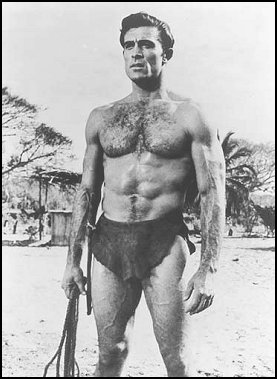 This expresses beautifully well the archetypal elements of the mythos that I have identified, and Mike Henry is 100% up to the job of realizing it on screen. Uncannily resembling Hal Foster's iconic Apeman from the dailies of the 1930s and 1940s, Henry is the most physically perfect Tarzan of the series. The greater part of "Gold" is devoted to long shots of Henry in either tremendous physical exertion (running; swimming; vine-swinging) or engaged in deadly physical combat. The action sequences, which are extremely well done, are the accumulative cinematic re-staging of the first component of the mythos: Tarzan's initial demonstrations of his status as Lord of the Jungle. With every act of lethal violence and revenge against Vinero-the killing of the mafia-style "hit men"; the slaying of the gang of kidnappers; the destruction of the attack helicopter; the causing of the cave-in; the commandeering of the tank and the massacre of the remnant of Vinero's army-Tarzan re-asserts his claim as the animus, the "true" Jungle Lord as against the would-be usurper Vinero. This theme is underscored by the film's most striking narrative twist. For the first time in the series, the action begins with Tarzan in the city and moving back towards the jungle, which he self-consciously decides to re-enter. Tarzan ceremoniously discards his "civilized" identity as John Clayton (the end-product of the initiating seduction earlier performed by the now off-screen Jane) and re-assumes his identity as the primitive animus through the act of stripping. He spectacularly re-emerges with all of his signature phallic symbols in place-the loincloth, the hunting knife, the jungle vine, the ferocious "pets"-broadcasting his true identity to both Vinero and to the audience. This transformation is as stunning as it is sudden, and indicates a dual change of Tarzan, both physically and mentally, into a jungle warrior. Replying to the astonished comments of his companions, Tarzan dryly remarks: "I wouldn't expect you to understand!"
This expresses beautifully well the archetypal elements of the mythos that I have identified, and Mike Henry is 100% up to the job of realizing it on screen. Uncannily resembling Hal Foster's iconic Apeman from the dailies of the 1930s and 1940s, Henry is the most physically perfect Tarzan of the series. The greater part of "Gold" is devoted to long shots of Henry in either tremendous physical exertion (running; swimming; vine-swinging) or engaged in deadly physical combat. The action sequences, which are extremely well done, are the accumulative cinematic re-staging of the first component of the mythos: Tarzan's initial demonstrations of his status as Lord of the Jungle. With every act of lethal violence and revenge against Vinero-the killing of the mafia-style "hit men"; the slaying of the gang of kidnappers; the destruction of the attack helicopter; the causing of the cave-in; the commandeering of the tank and the massacre of the remnant of Vinero's army-Tarzan re-asserts his claim as the animus, the "true" Jungle Lord as against the would-be usurper Vinero. This theme is underscored by the film's most striking narrative twist. For the first time in the series, the action begins with Tarzan in the city and moving back towards the jungle, which he self-consciously decides to re-enter. Tarzan ceremoniously discards his "civilized" identity as John Clayton (the end-product of the initiating seduction earlier performed by the now off-screen Jane) and re-assumes his identity as the primitive animus through the act of stripping. He spectacularly re-emerges with all of his signature phallic symbols in place-the loincloth, the hunting knife, the jungle vine, the ferocious "pets"-broadcasting his true identity to both Vinero and to the audience. This transformation is as stunning as it is sudden, and indicates a dual change of Tarzan, both physically and mentally, into a jungle warrior. Replying to the astonished comments of his companions, Tarzan dryly remarks: "I wouldn't expect you to understand!"
Only two things now remain, each one side of a single dramatic event: the killing of the challenger and the winning of the woman.
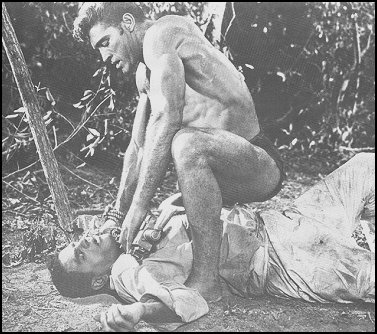
Mr. Train/Terkoz
Although Tarzan is ultimately able to despatch all of Vinero's underlings, as well as the crime-boss himself, considerable suspense remains as to whether Tarzan will be able to ultimately succeed in his mission. The challenger, Mr. Train, is simply too much of a match for the Apeman, creating the unconscious dread in the viewer that the Valley of Gold will prove to be the tomb not of Vinero but of Tarzan. To the best of my knowledge, "Gold" is the only Tarzan film in which the challenger is presented in terms of overt physical superiority to Tarzan. Don Megowan's Mr. Train-think of the Frankenstein monster with a black-belt in karate-spends much of the film displaying his obscene strength in direct challenge to the Apeman; these acts include lifting boulders and crushing stone statuettes with his bare hands. (As the power obsessed Vinero informs his appalled and gasping mistress Sophia Renault, Mr. Train's fingers "are like knives".) Mr. Train, then, is Terkoz the killer-ape in a new guise, the one threat great enough to put an end to the Apeman's quest to be the Jungle Lord and, for that reason, the very one who must be fought and killed in order for Tarzan to establish his mastery over the jungle. Not surprisingly, "Gold" is overlaid by a highly suspenseful feeling of impending doom, as Tarzan and Mr. Train both advance towards their dramatically unavoidable "show down". Only in "Tarzan's Greatest Adventure" is the likely death of the Apeman so clearly announced, and like in the earlier film, is the final death-struggle in "Gold" fought with such utter desperation. The fight scene is extremely complex, fast moving, and expertly choreographed as a savage wrestling contest, with Mr. Train's movements taking on the form of a violence-crazed gorilla. The archetypal sub-text of the film is brilliantly realized at exactly this moment, when Tarzan-whose inferior strength is clearly being stretched to the breaking point- applies his last-chance move to kill Mr. Train: he places the gigantic bodyguard in a full-nelson, the signature hold that Tarzan uses against his very greatest feral enemies in the original novel, Terkoz the gorilla and Sabor the lioness. Not coincidentally, his killing of both these challengers results in his taking possession of the anima, Jane Porter.

Sophia Renault/Jane Porter
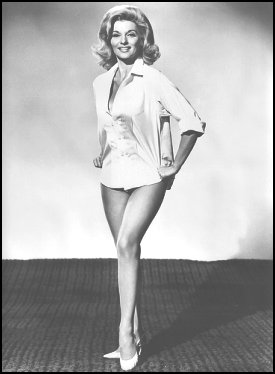 As I have already indicated, the imposition of the Hay's Code effectively ruined Jane as a serious erotic character; as idiotic as it sounds, the only way to restore the archetypal drama of the mythos was to eliminate Jane as an on-screen presence, allowing Tarzan the opportunity to fight for and win a "new" mate/anima. The crucial requirement here, of course, is that the "new Woman" had to be of at least equal archetypal status to Maureen O'Sullivan's iconic jungle girl from "Tarzan and His Mate". Nancy Kovack's erotically stunning Sophia Renault proves more than a match to the fading image of Jane in the collective cinematic unconscious of the viewer; indeed, I would even argue that Sophia Renault poses as much an erotic challenge to Jane as Mr. Train presents a physical danger to Tarzan, threatening the jungle girl with a kind of symbolic "death". Directly modelled upon Honor Blackman's performance as Pussy Galore in "Goldfinger", Sophia is a stereotypical example of the cinematic icon of the "gangster-moll": the femme-fatale who is both able to seduce the hero (frequently luring him into some kind of death-trap, which is exactly what happens in "Gold") but who possesses such an extraordinary degree of glamorous sexual beauty that the risk to the hero ultimately proves worth it. In "Gold", of course, there is an added twist; Sophia is not just any Woman, she is the sex-trophy of the would-be alpha-male Vinero, the very last of a series of voluptuous mistresses, each one more spectacular than the last, but ultimately no less disposable than the others. Tarzan's rescue and conquest of the neo-Jane, therefore, is not merely an erotic episode in its own right, but it serves, no less than the bare-handed killing of Mr. Train, as the final act of Tarzan's symbolic validation as the true animus.
As I have already indicated, the imposition of the Hay's Code effectively ruined Jane as a serious erotic character; as idiotic as it sounds, the only way to restore the archetypal drama of the mythos was to eliminate Jane as an on-screen presence, allowing Tarzan the opportunity to fight for and win a "new" mate/anima. The crucial requirement here, of course, is that the "new Woman" had to be of at least equal archetypal status to Maureen O'Sullivan's iconic jungle girl from "Tarzan and His Mate". Nancy Kovack's erotically stunning Sophia Renault proves more than a match to the fading image of Jane in the collective cinematic unconscious of the viewer; indeed, I would even argue that Sophia Renault poses as much an erotic challenge to Jane as Mr. Train presents a physical danger to Tarzan, threatening the jungle girl with a kind of symbolic "death". Directly modelled upon Honor Blackman's performance as Pussy Galore in "Goldfinger", Sophia is a stereotypical example of the cinematic icon of the "gangster-moll": the femme-fatale who is both able to seduce the hero (frequently luring him into some kind of death-trap, which is exactly what happens in "Gold") but who possesses such an extraordinary degree of glamorous sexual beauty that the risk to the hero ultimately proves worth it. In "Gold", of course, there is an added twist; Sophia is not just any Woman, she is the sex-trophy of the would-be alpha-male Vinero, the very last of a series of voluptuous mistresses, each one more spectacular than the last, but ultimately no less disposable than the others. Tarzan's rescue and conquest of the neo-Jane, therefore, is not merely an erotic episode in its own right, but it serves, no less than the bare-handed killing of Mr. Train, as the final act of Tarzan's symbolic validation as the true animus.
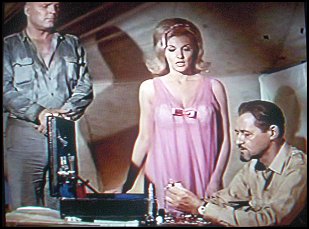
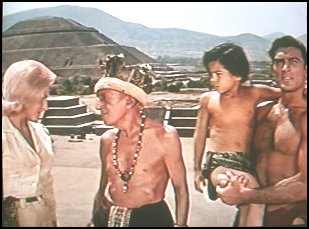
Despite its overlay of elements of James Bond, then, "Gold" is a wholly successful adaptation and retelling of the archetypal Tarzan mythos. And this is wholly appropriate; in literature, "gold", or "treasure", is a metaphor for eros--and gold is the color of Sophia's hair. It is the stuff that archetypal fantasies of the animus are made on.
- reviewed by Eric Wilson
